Before Europeans arrived in America, longleaf pine savannas sprawled across 90 million acres from present-day Florida to Texas and Virginia. Today, thanks to human impacts, less than 3 percent of that acreage remains, and what's left exists in fragmented patches largely isolated from one another.
Yet, hundreds of plant and animals species rely on these savannas, from understory grasses and the gopher tortoise, to the endangered red-cockaded woodpecker.
Habitat fragmentation is a major threat to biodiversity - not just in longleaf pine savannas, but in habitats across the planet. A new study published this week (Sept. 27, 2019) in the journal Science demonstrates a hopeful new strategy in efforts to conserve plant and animal species confronting fragmented and shrinking habitats globally.
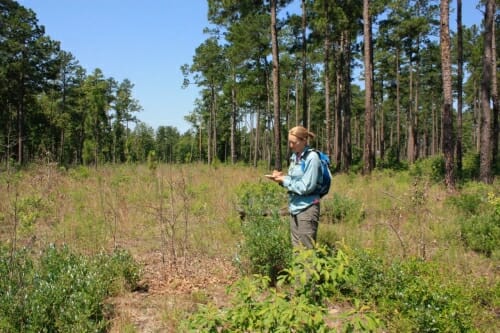
Ellen Damschen (above) and the research team were surprised to find an annual increase of 5% in the number of new species arriving, or colonizing, corridor-connected longleaf pine fragments, and an annual drop of 2% in the number of species going extinct. Courtesy of Ellen Damschen
By connecting small, restored patches of savanna to one another via habitat corridors at an experimental landscape within the Savannah River Site in South Carolina, the nearly 20-year-long study has shown an annual increase in the number of plant species within fragments over time, and a drop in the number of species disappearing from them entirely.
"We know that habitat fragmentation and loss is the number one driver of species extinctions in the U.S. and across the globe," says study lead author Ellen Damschen, professor of integrative biology at the University of Wisconsin-Madison. "We need conservation solutions that can protect existing species and restore lost habitat."
She and co-author John Orrock, also a professor of integrative biology at UW-Madison, compare the findings to an unexpected realm: finance. The research team was surprised to find an annual increase of 5% in the number of new species arriving, or colonizing, corridor-connected longleaf pine fragments, and an annual drop of 2% in the number of species going extinct.
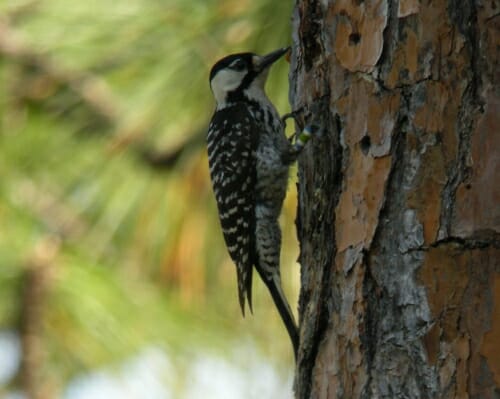
The longleaf pine ecosystem supports thousands of plant and animal species, including the red-cockaded woodpecker. Photo: Tal Mims
"Like compound interest in a bank, the number of species increases at a constant rate each year, resulting in a much larger bottom line over time in habitats that are connected by a corridor than those that are not," Damschen says.
Over the 18-year study period, that equated to an average of 24 additional species in each connected fragment relative to the study's control fragments, which were not connected by corridors. Each fragment is about the size of two football fields, and the corridors that connect them span roughly 500-by-80 feet each.
"Like any good, long-term investment, it builds over time," Orrock says. Neither he nor Damschen, nor the research team, expected to discover an annual rate of increase with no signs of slowing.
The long-term conservation and restoration study, which is still ongoing, is rare in the ecological world, in part because the study controls for the area and the connectedness of fragmented habitats. Most studies have examined habitat size alone.
"From a biodiversity standpoint, we know habitat area is important," says Damschen. "But we also need to be thinking about the network of remaining habitat and how to reconnect small parcels."
Because, Orrock adds, "it's not always possible to make more habitat, so connecting existing habitat is another tool in the conservation toolbox."
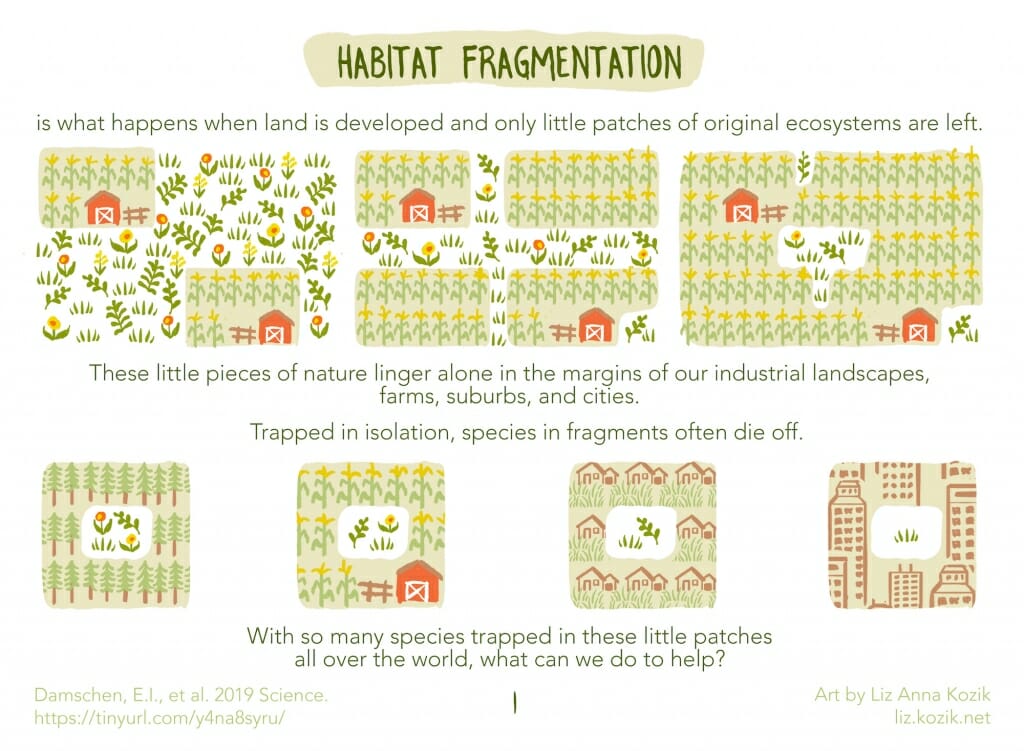
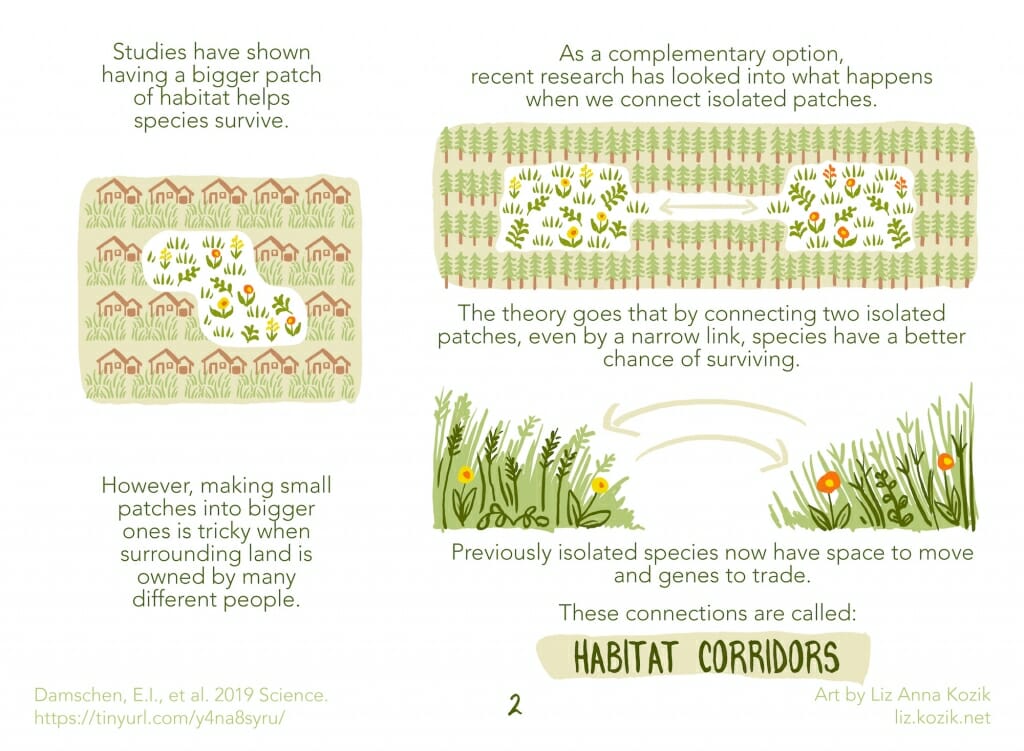
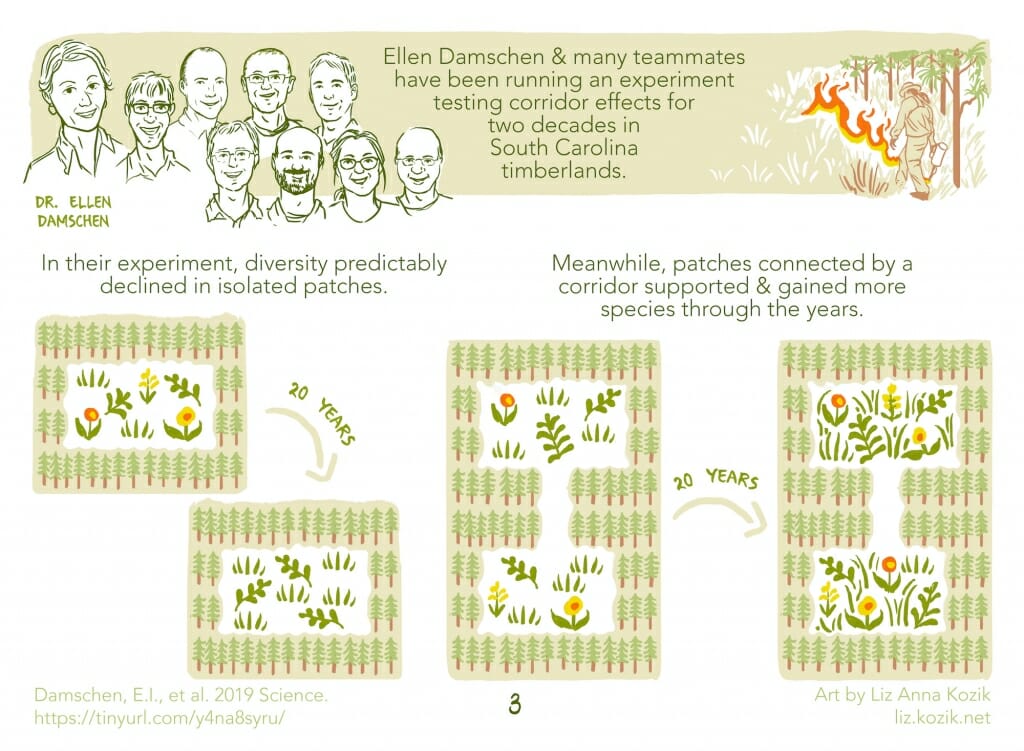
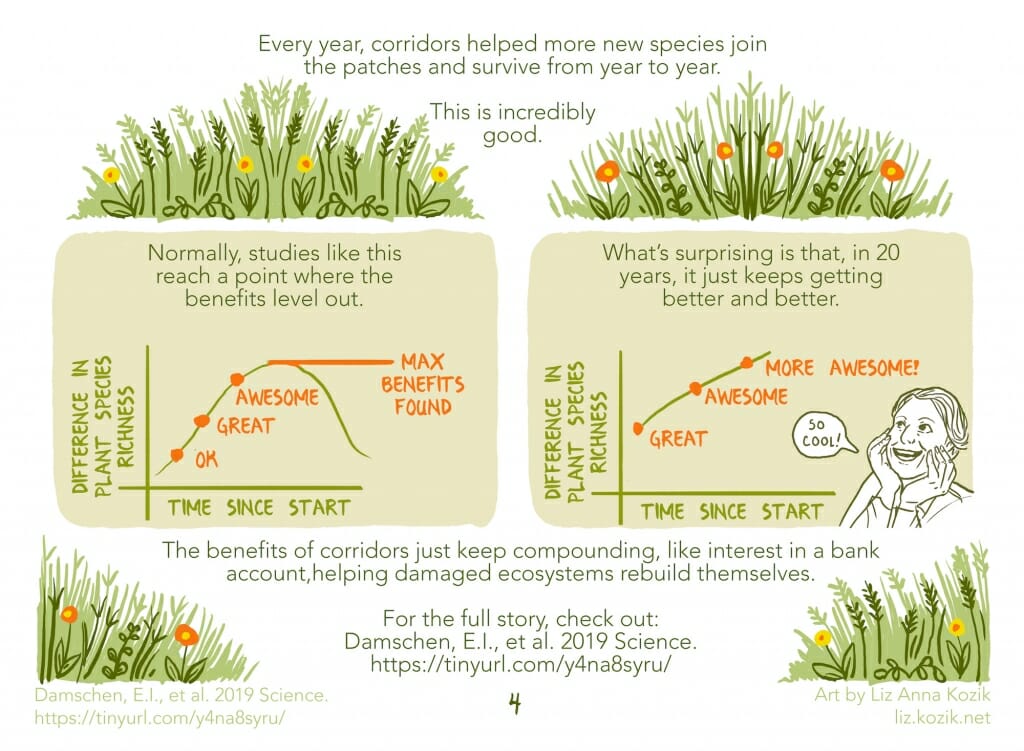
The study is also unique in its longevity, which has been possible thanks to funding from the National Science Foundation Long Term Research in Environmental Biology Program. Most ecological studies span just one to five years, or the life cycle of a typical research grant, but the findings show that meaningful results take time to accumulate.
"The power of this long-term study is that small differences in species accumulation rates have a big impact over the long term," said Betsy Von Holle, program director at the NSF. "This has major implications for restoration and conservation science."
The study has also relied on collaboration with the U.S. Forest Service-Savannah River, under the authority of the Department of Energy Savannah River Operations Office, where fragments and corridors are being restored to longleaf pine savanna. Longleaf pine habitat has contracted since colonial times, as trees were exploited for timber, tar and turpentine, and lost to urbanization.
"As land managers, we incorporate these long-term studies into our daily work of savanna restoration," says Forest Manager DeVela Clark of the U.S. Forest Service-Savannah River. "Ellen and the research team share our appreciation that research and restoration require a long-term perspective."
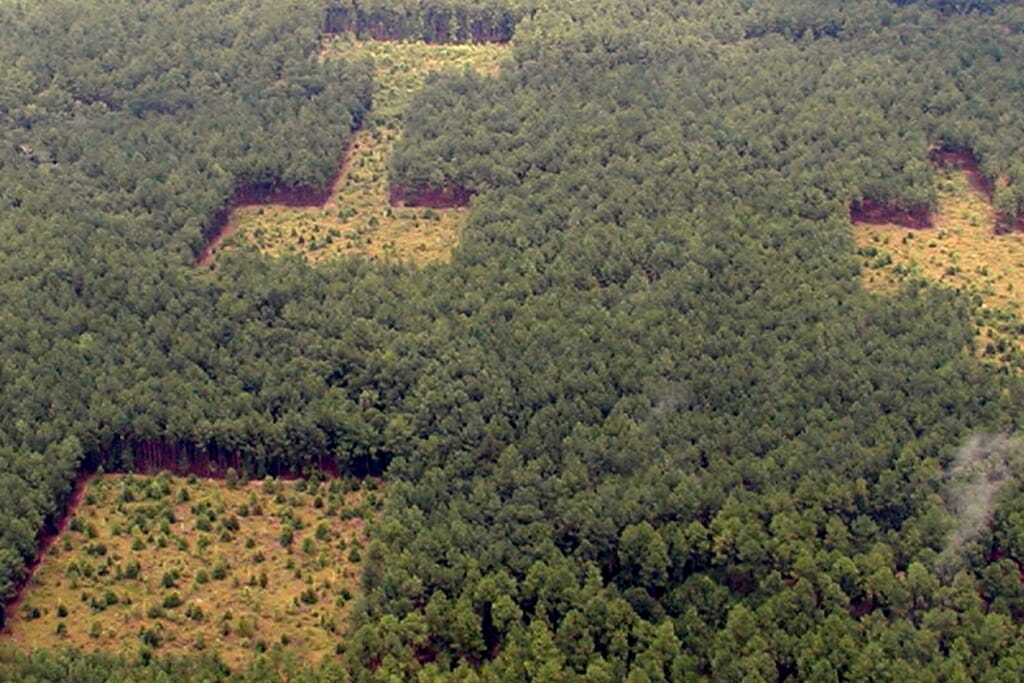
One of eight experimental landscapes at the Savannah River Site in South Carolina that test for the long-term effects of corridors on plant diversity. Photo: Ellen Damschen / Editing: Neil McCoy
There are now also efforts underway in Virginia, the northern edge of the species' historic range, to restore longleaf pine savannas, led by The Nature Conservancy and the Virginia Department of Conservation and Recreation Division of Natural Heritage. The UW-Madison-led study provides results that come at a key moment for conservation decisions.
"It's a race against time when it comes to restoring plant biodiversity, especially in the face of accelerating climate change and landscape fragmentation," says Brian van Eerden, director of The Nature Conservancy's Virginia Pinelands Program. "We need the best available science from long-term, large-scale studies like this to inform how to connect and manage our conserved lands to ensure the native species have the best chances to survive and thrive."
Habitat restoration is now a key priority across the globe. Earlier this year, the United Nations declared 2021 through 2030 the UN Decade on Ecosystem Restoration, with the hope of eliminating excess, heat-trapping greenhouse gases; improving food security and freshwater supplies; and protecting critical human and animal habitats.
"Doing experiments on the consequences of habitat loss and fragmentation at realistic scales is incredibly difficult because when you look at a real landscape, so many things are happening simultaneously," says Damschen. "You need a strong experiment that isolates those independent factors - such as size, connectedness, the proximity to a habitat edge - at a scale relevant for conservation, and over a meaningful timescale.
"We have had that opportunity for the past 20 years."
Study coauthors include researchers from Michigan State University, the University of Florida, the University of Colorado Boulder, the National Science Foundation, Future Earth, and George Mason University.






